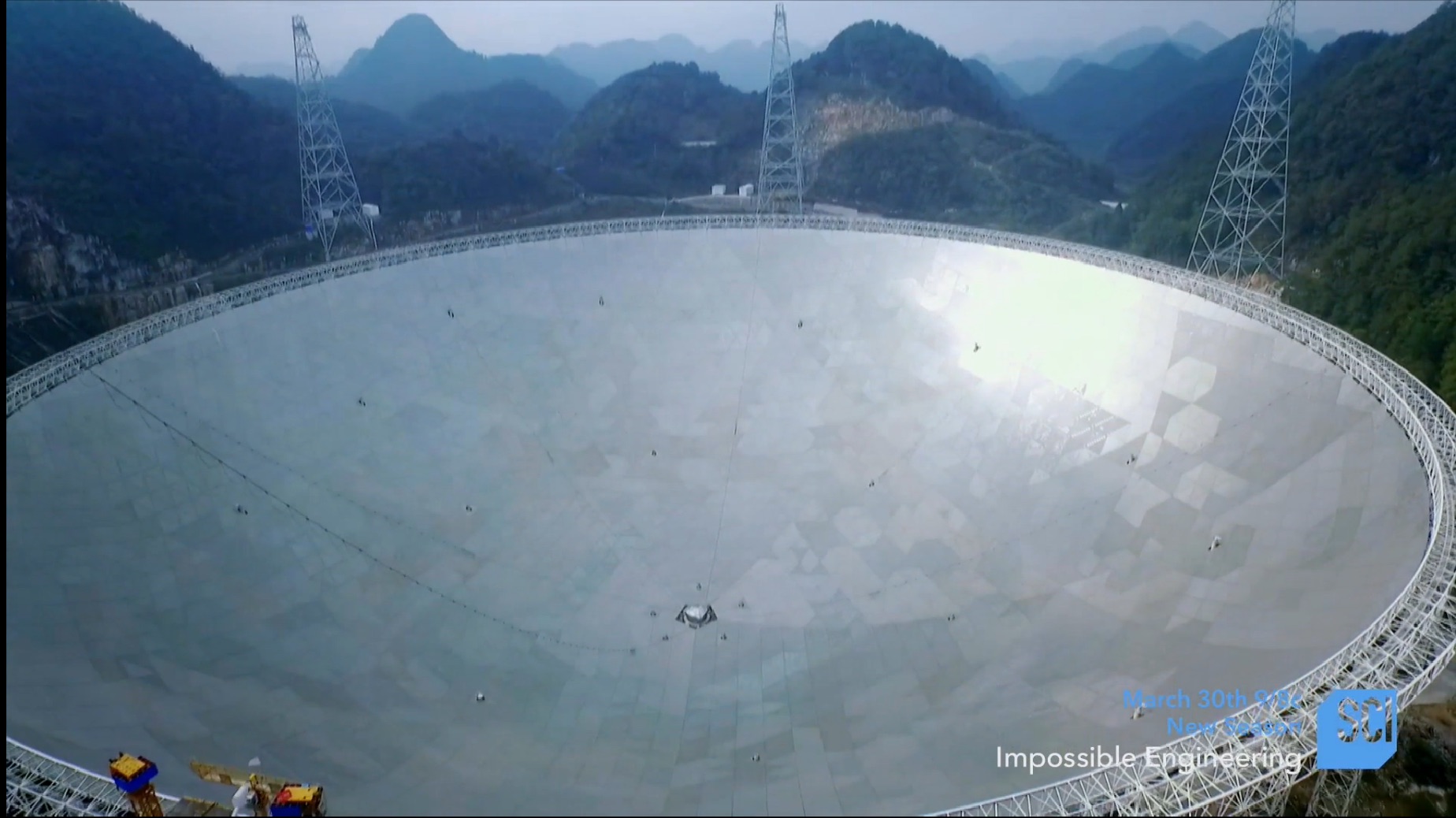Gargantuan Chinese Radio Telescope Stars in 'Impossible Engineering' Clip

A new clip from Science Channel's "Impossible Engineering" highlights the astonishingly large Five-hundred-meter Aperture Spherical radio Telescope (FAST) in China.
The 500 m (1,650 feet) dish is the world's largest single-aperture telescope — the dish is the size of 30 football fields — and its scale is dramatically evident in the video clip. "Impossible Engineering" devotes the first episode of its third season, airing March 30 at 9 p.m. (EDT and PDT), to how the massive telescope was built.
"The collecting area is more than 30 football fields," Bo Peng, deputy manager of the FAST project, said in the video. "If we fill the big dish with wine, everybody in the world could have four bottles of wine."
Engineers completed the telescope last year, and when it goes online it will lend a gigantic ear to the search for extraterrestrial life, as well as other scientific endeavors. It will be able to see further than the previous record-holder for size, the 1,000-foot-wide (300 meters) Aricebo Observatory in Puerto Rico.
Other episodes of "Impossible Engineering" will feature the construction of the International Space Station, Elon Musk's Tesla Factory, the Panama Canal Expansion, the Halley VI Research Centre in Antarctica, the hybrid airship Airlander 10 and more.
"'Impossible Engineering' illuminates the past, present and future builds that influence the course of history and will continue to inspire innovation for years to come," Marc Etkind, Science Channel's general manager, said in a statement. "These remarkable feats are a tribute to the creativity and courage of humankind, and Science Channel celebrates the brilliant and inventive work happening every day around the world."
Email Sarah Lewin at slewin@space.com or follow her @SarahExplains. Follow us @Spacedotcom, Facebook and Google+. Original article on Space.com.
Get the Space.com Newsletter
Breaking space news, the latest updates on rocket launches, skywatching events and more!
Join our Space Forums to keep talking space on the latest missions, night sky and more! And if you have a news tip, correction or comment, let us know at: community@space.com.

Sarah Lewin started writing for Space.com in June of 2015 as a Staff Writer and became Associate Editor in 2019 . Her work has been featured by Scientific American, IEEE Spectrum, Quanta Magazine, Wired, The Scientist, Science Friday and WGBH's Inside NOVA. Sarah has an MA from NYU's Science, Health and Environmental Reporting Program and an AB in mathematics from Brown University. When not writing, reading or thinking about space, Sarah enjoys musical theatre and mathematical papercraft. She is currently Assistant News Editor at Scientific American. You can follow her on Twitter @SarahExplains.









